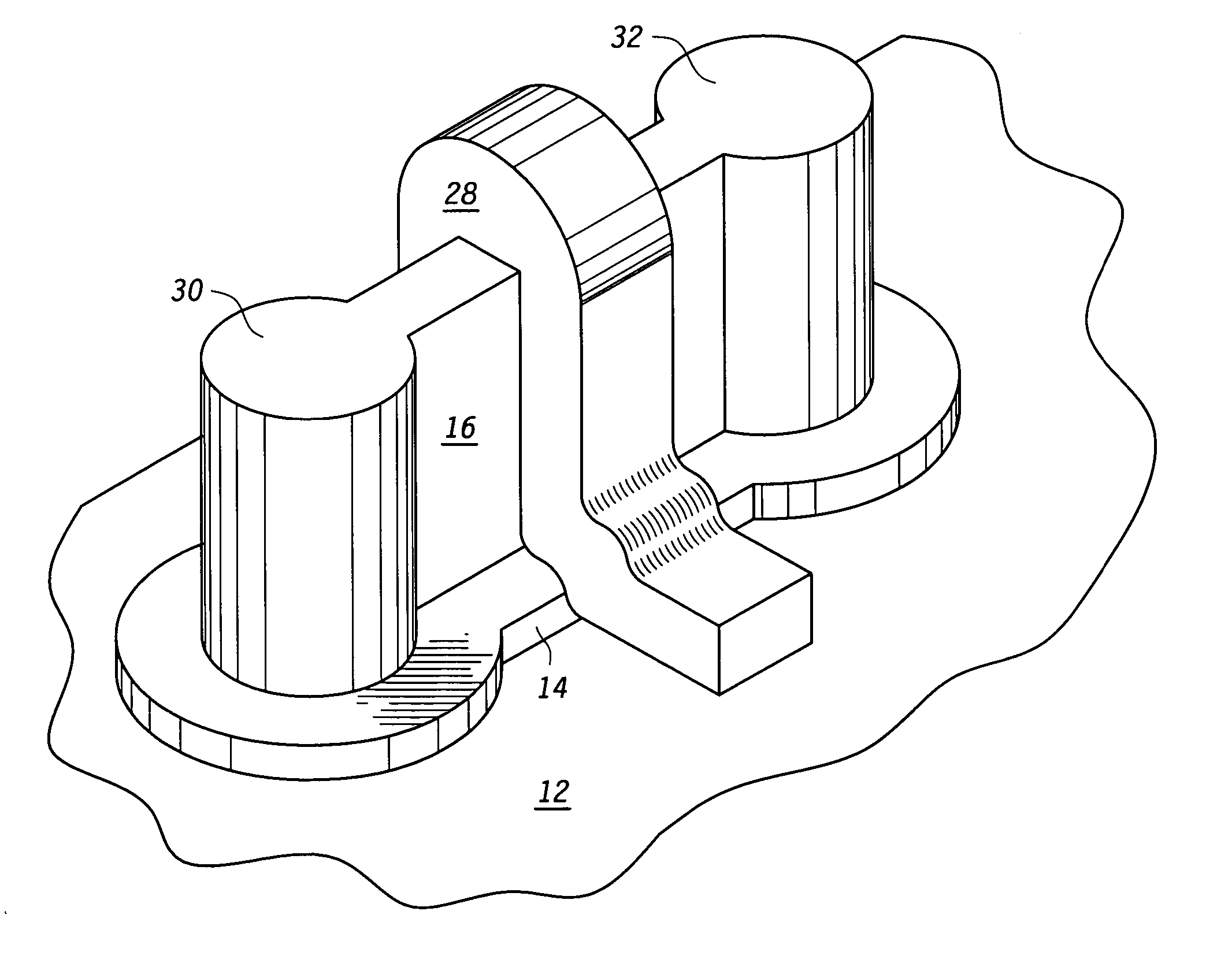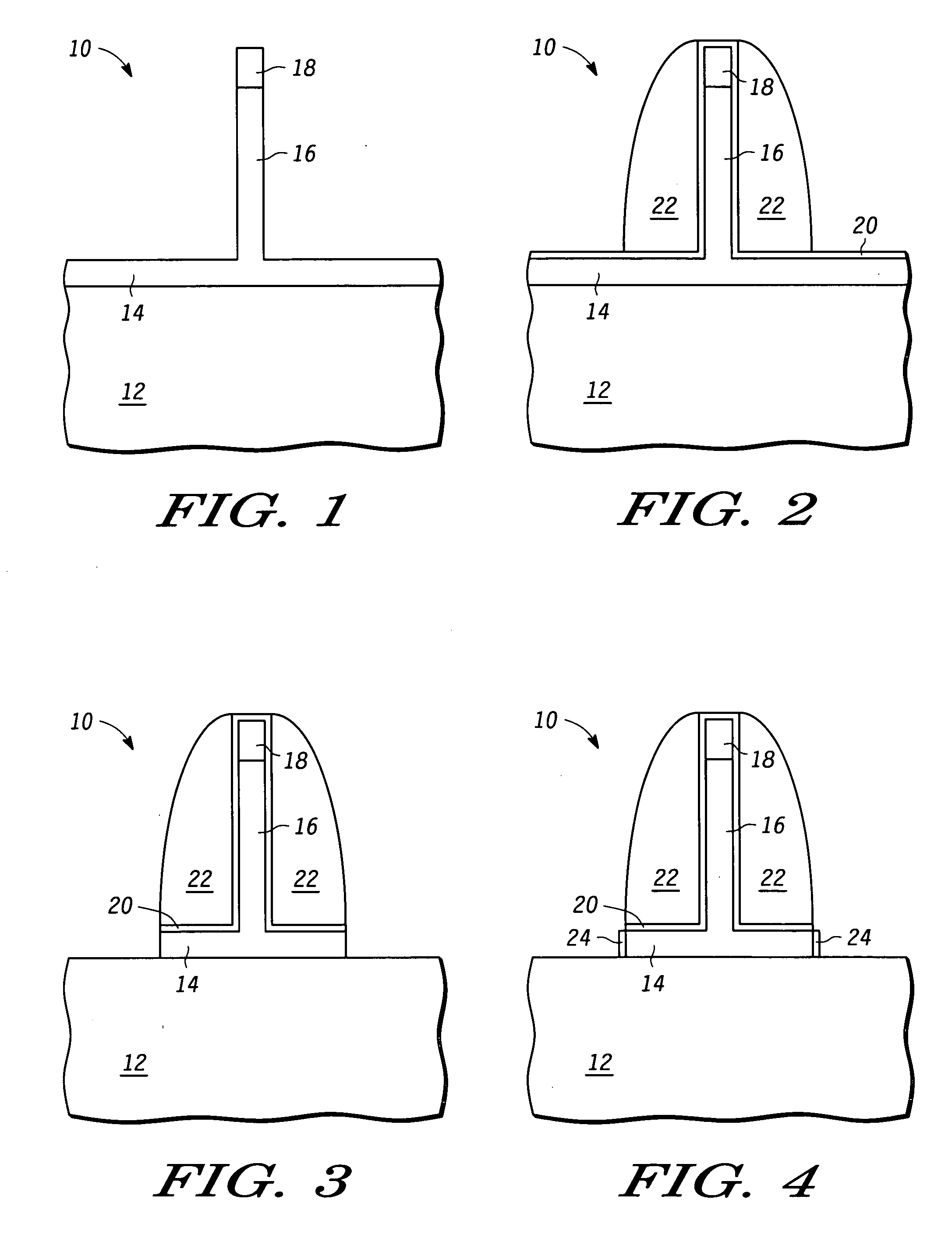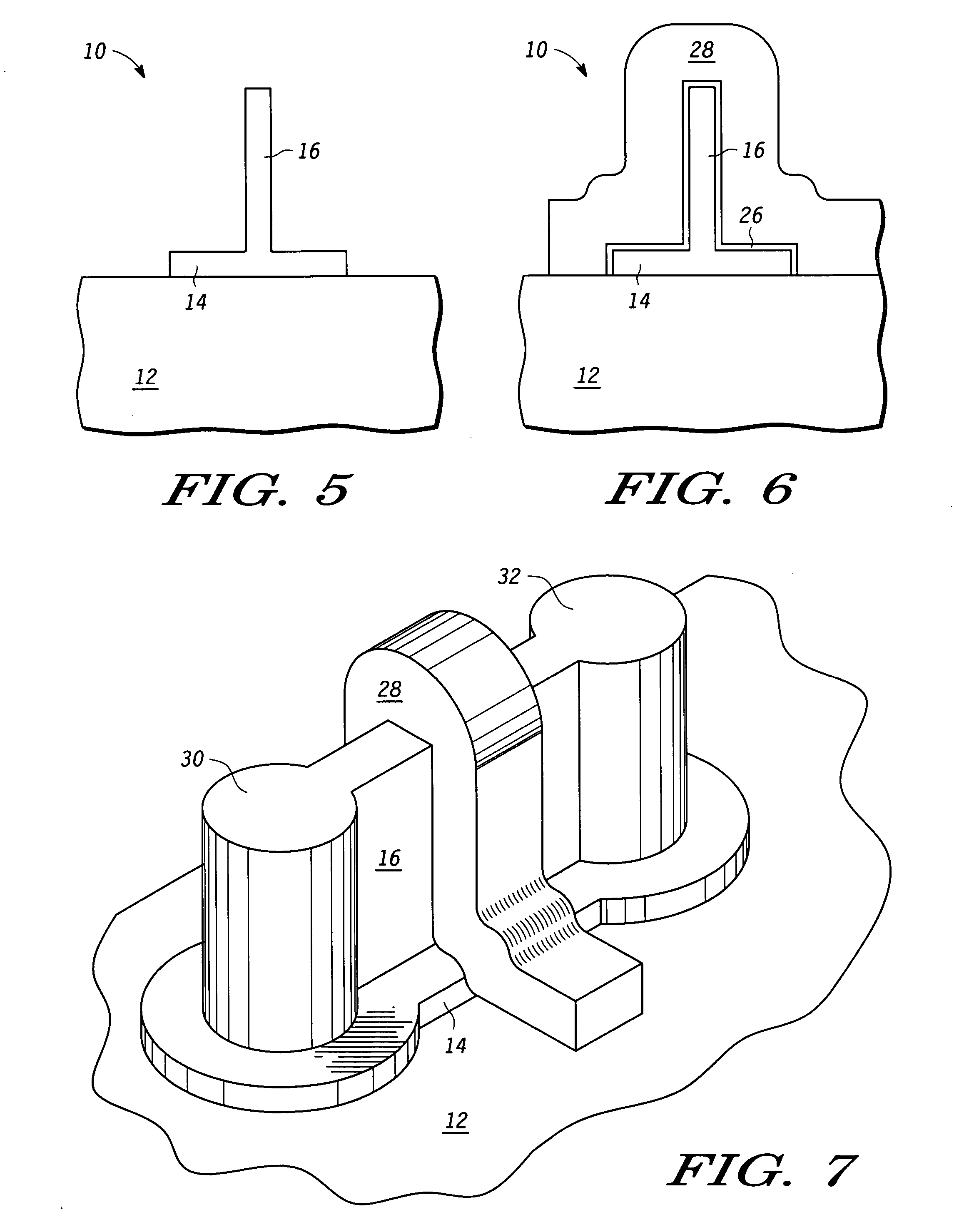Method of making an inverted-T channel transistor
a transistor and inverter technology, applied in the field of integrated circuits, can solve the problems of inability to adjust the current drive of the transistor, general inapplicability, and fin heigh
- Summary
- Abstract
- Description
- Claims
- Application Information
AI Technical Summary
Benefits of technology
Problems solved by technology
Method used
Image
Examples
Embodiment Construction
[0023] In one aspect a FinFET is made with a lateral extension of the channel so as to increase the current drive of the FinFET. A lateral extension extends adjacent to the fin of FinFET along the surface of the substrate. The gate that overlies the fin also overlies the lateral extension. The lateral extension is defined by a sidewall spacer. The fin is formed by an etch that leaves, in addition to the fin, a floor of semiconductor material that is left over the substrate. The sidewall spacer is formed on both sides of the fin to act as a mask in an etch of the floor of the semiconductor material to leave the lateral extension. The lateral extension is selectable within the range of sidewall spacers widths. Using conventional sidewall formation techniques, the width is easily adjustable from 50 to 1000 Angstroms. The lateral extension thus results in increased current drive that is selectable but not limited to increments corresponding to the fin height. This is better understood b...
PUM
 Login to View More
Login to View More Abstract
Description
Claims
Application Information
 Login to View More
Login to View More - R&D
- Intellectual Property
- Life Sciences
- Materials
- Tech Scout
- Unparalleled Data Quality
- Higher Quality Content
- 60% Fewer Hallucinations
Browse by: Latest US Patents, China's latest patents, Technical Efficacy Thesaurus, Application Domain, Technology Topic, Popular Technical Reports.
© 2025 PatSnap. All rights reserved.Legal|Privacy policy|Modern Slavery Act Transparency Statement|Sitemap|About US| Contact US: help@patsnap.com



